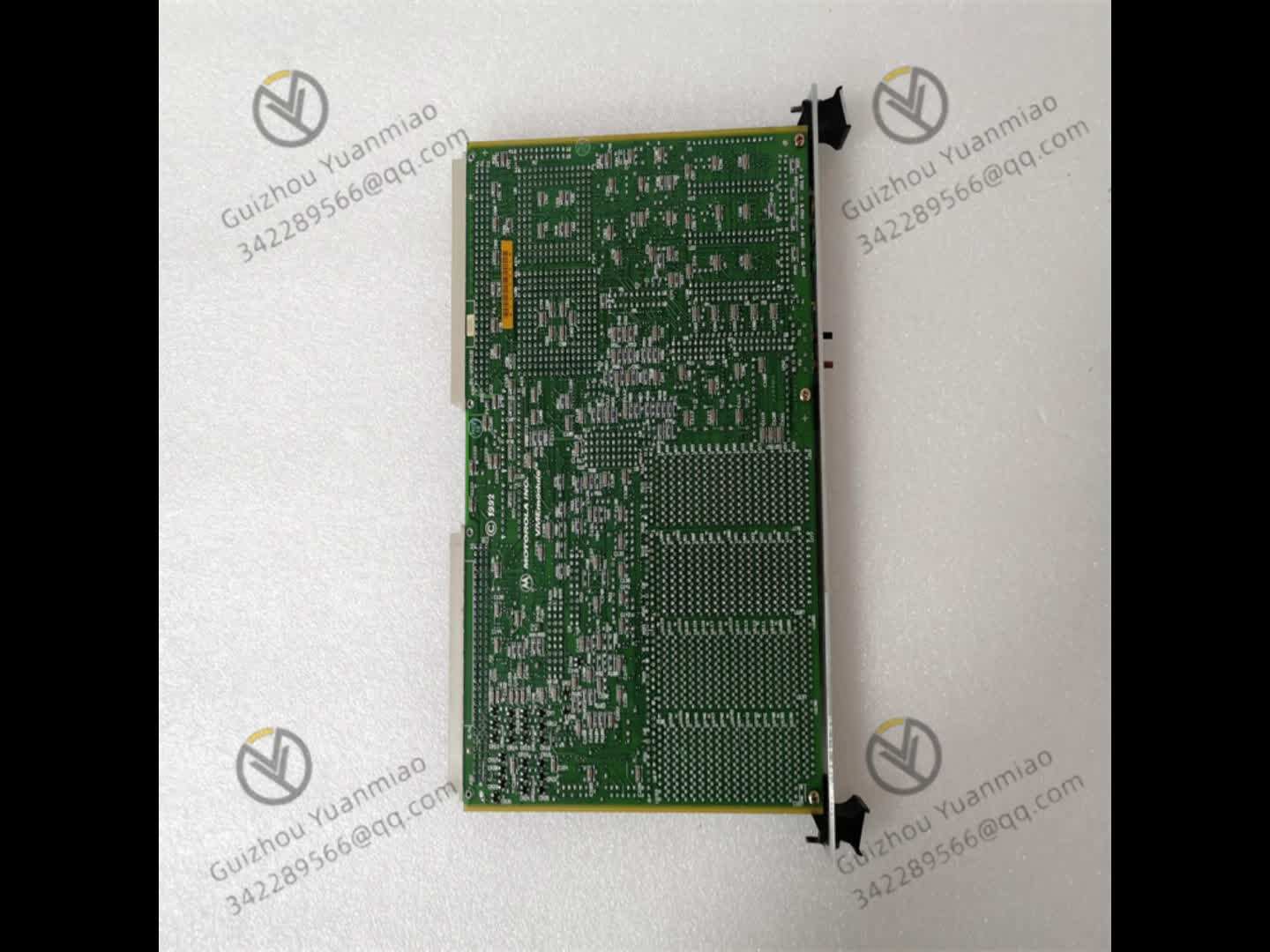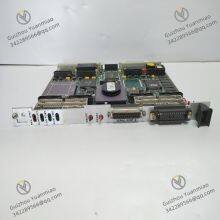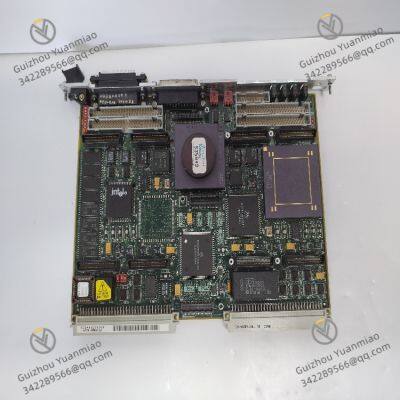Material
Other, Global universal model
Condition
Other, Global universal model
Task
Other, Global universal model
Mathematical Model
Other, Global universal model
Signal
Other, Global universal model
Customized
Non-Customized
Structure
Other, Global universal model
Operating Temperature
-40℃~+70℃
Relative Humidity
5%~95% (non-condensing)
Dimensions
238mm × 160mm × 25.5mm
Storage Temperature
-55℃~+85℃
I. Overview
The MOTOROLA MVME162-522A is an industrial-grade Single-Board Computer (SBC) based on the VMEbus architecture, launched by Motorola. As an enhanced model of the classic MVME (Motorola Versatile Modular Executive) series, its core positioning is "a highly reliable computing and multi-interface control core for embedded control systems in harsh industrial environments". It mainly serves fields with extremely high requirements for system stability, real-time performance, anti-interference capability, and environmental adaptability, such as power system monitoring, chemical process control, rail transit signal processing, and aerospace ground equipment. It undertakes the core tasks of "complex data computing and processing - multi-type peripheral management - real-time control command output - system fault self-diagnosis".
With its core advantages of "industrial-grade stable computing core + standardized VME expansion + wide-temperature and harsh environment-resistant design + full-interface compatibility", this single-board computer has irreplaceable value in scenarios such as the upgrading of outdated industrial control systems (e.g., replacing the core computing module in traditional PLC control cabinets) and the construction of new embedded systems (e.g., distributed control nodes for large-scale equipment). Its core role is to solve the three major pain points in industrial embedded control: "system crash in complex environments", "difficulty in compatibility with multiple peripheral interfaces", and "poor adaptability in upgrading outdated equipment". Through high-performance processors, standardized VME expansion slots, and industrial-grade protection design, it realizes real-time and precise control of on-site equipment (command response time ≤ 2ms) and efficient data processing (computing performance up to more than 20 MIPS), avoiding production interruptions caused by the failure of the core control unit (the loss of a single interruption can reach hundreds of thousands of yuan) and ensuring the continuous and stable operation of industrial systems.

II. Technical Specifications
(1) Core Computing and Storage Parameters
(2) Interface and Expansion Parameters
(3) Physical and Environmental Parameters
(4) Power Supply and Reliability Parameters

III. Functional Features
(1) Industrial-Grade Stable Operation, Adaptable to Complex Environments
Wide-Temperature and Anti-Interference Design
Core components (processor, memory, interface chip) all adopt industrial-grade wide-temperature models with a range of -40℃~+70℃; the circuit board has a copper-clad thickness of 1.6mm, enhancing anti-electromagnetic interference capability; the power module is equipped with an EMC filter circuit to reduce the impact of external power noise on the core circuit. For example, in the high-electromagnetic interference environment of a chemical workshop (with high-power frequency converters nearby), the MVME162-522A can still operate stably, with no delay in control command response and no packet loss in data transmission.
Redundancy and Fault-Tolerance Mechanism
The memory supports parity check, which can automatically detect and correct single-bit errors, avoiding program crashes caused by memory data errors; the system boot program (in EPROM) supports the "fault self-recovery" function. When the application program crashes, it can automatically restart and load the backup program, with a recovery time ≤ 5s, reducing manual intervention; the power interface is equipped with reverse connection protection to prevent equipment damage caused by on-site personnel's wiring errors.
(2) Standardized VME Expansion, Compatible with Various PeripheralsFlexible Expansion Capability
Through the VMEbus slot, it can access the full range of MVME expansion modules (digital IO, analog acquisition, motion control, etc.). During the expansion process, there is no need to modify the core program; only the module address and interrupt priority need to be configured through software to adapt to the functional upgrading of the control system. For example, in power system monitoring, adding an MVME460 analog acquisition module (8-channel 4-20mA input) can add the function of collecting 8-channel current signals, realizing real-time monitoring of power grid current, with an expansion cycle of only 1 day.
Full-Interface Compatibility
It integrates multiple types of industrial interfaces such as serial ports, Ethernet, and parallel interfaces. The serial ports support RS-232/RS-422/RS-485 mode switching and can be connected to devices such as remote IO modules, intelligent meters, and serial printers; the Ethernet interface supports the TCP/IP protocol and can be connected to the factory local area network (LAN) to realize bidirectional data interaction with upper computers (SCADA, MES systems). No additional adapter cards are required, which simplifies the system architecture and reduces integration costs (40% lower than the traditional multi-interface splicing solution).
(3) Efficient Computing and Real-Time Control, Improving System Efficiency
Powerful Computing Core Support
The Motorola 68040 processor (33MHz) is matched with a 68882 floating-point coprocessor, with an integer computing performance of 20 MIPS and a floating-point computing performance of 1.0 MFLOPS. It can efficiently process complex algorithms in industrial control (such as PID adaptive adjustment algorithms and multi-device collaborative control logic). For example, in rail transit signal processing, it can calculate the train's operating speed and stopping position in real time, with a control command response time ≤ 2ms, ensuring the train's on-time rate ≥ 99.8%.
Low-Latency Data Transmission
The VMEbus rate reaches 40MB/s, providing sufficient data transmission bandwidth to ensure no delay in data interaction between multiple modules; it integrates a DMA controller that supports high-speed data transmission (such as direct data reading and writing from expansion modules to memory), reducing processor occupancy and improving system real-time performance.
(4) Convenient Operation, Maintenance and Upgrading, Reducing CostsVisual Status Monitoring
The front panel is equipped with 4 types of indicators: power (green), operation (blue, blinking = normal), fault (red, steady on = fault), and interrupt (yellow, blinking = interrupt occurred). On-site personnel can quickly judge the system operation status through the indicator status; the debugging serial port supports viewing system logs and real-time data through terminal software, enabling fault troubleshooting without disassembling the equipment.
Convenient Firmware and Program Upgrading
The Flash memory supports in-circuit programming (via Ethernet or serial port), allowing remote upgrading of application programs and system firmware without on-site equipment disassembly. This is especially suitable for equipment in remote areas (such as oilfield wellhead monitoring units), reducing operation and maintenance costs by 60%; it supports the "dual firmware backup" function, which automatically switches to the backup firmware when the upgrade fails, avoiding system paralysis.

IV. Common Faults and Solutions















































